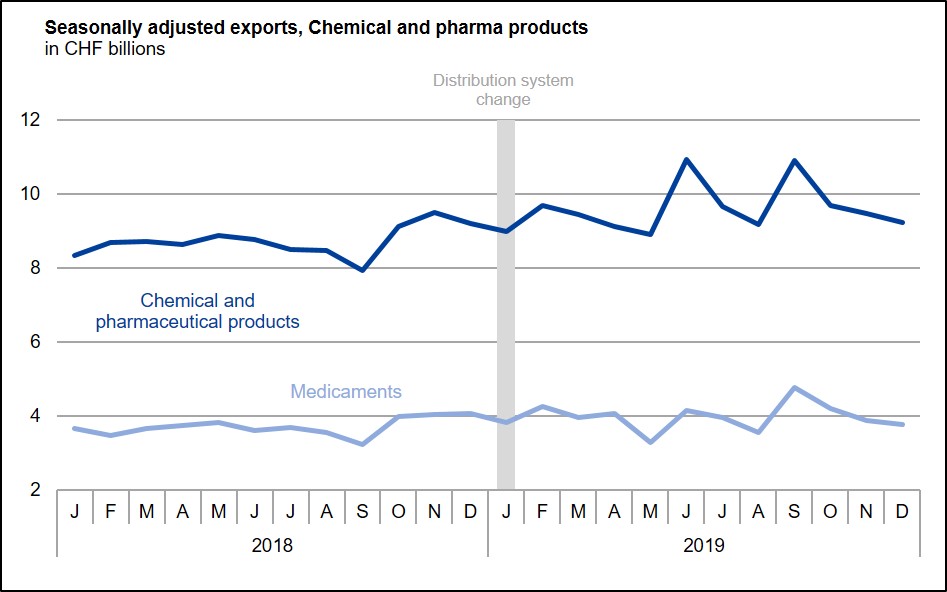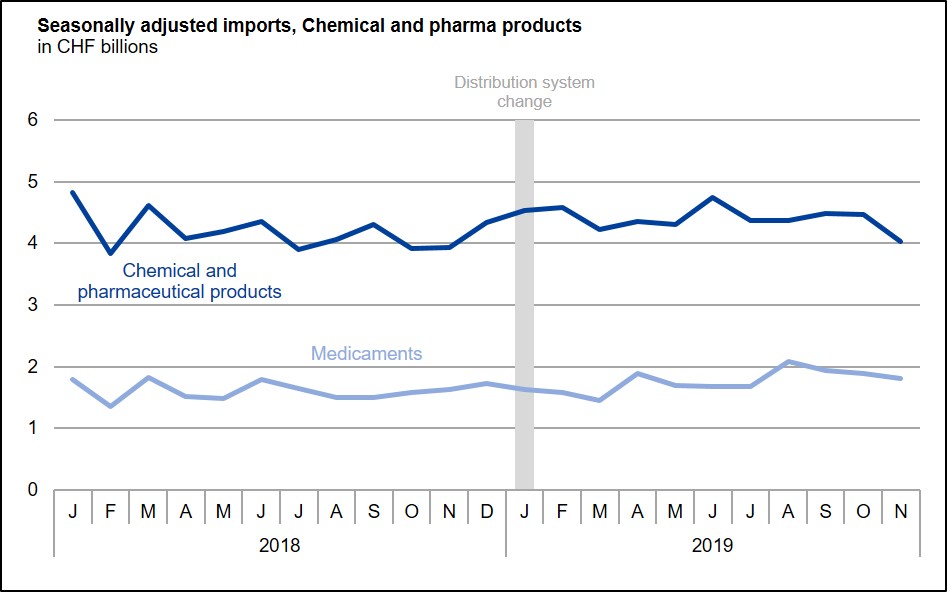Survey territory
The Principality of Liechtenstein and the enclave of Büsingen belong to the Swiss customs territory and are included in the foreign trade statistics, whereas the valleys of Samnaun and Sampuoir are excluded.
The Principality of Liechtenstein and the enclave of Büsingen belong to the Swiss customs territory and are included in the foreign trade statistics, whereas the valleys of Samnaun and Sampuoir are excluded.
Internationally a distinction is made between special and general trade. Swiss foreign trade statistics are based on the special trade concept. Imports include merchandise for which an according declaration has been made and which thus may freely circulate. Exports are merchandise goods leaving the Swiss customs territory (for more detailed information, please see the survey concept).
Swiss foreign trade statistics cover the imports and exports of goods as follows:
Importation:
Exportation:
Excluded are:
under certain conditions: imported small consignments with a value of up to CHF 1,000 and a quantity of less than 1,000 kg.
In essence, the foreign trade statistics are based on data from the customs declarations of importers and exporters or their representatives. However, the data on change of ownership of ships are delivered from the Swiss Maritime Navigation Office and from the Land Register and Land Surveyor's Office ("Grundbuch- und Vermessungsamt") of the Canton of Basel-City.
| Data | Data sources |
|---|---|
| Change of ownership of ships | - Swiss Maritime Navigation Office - Land Register and Land Surveyor's Office ("Grundbuch- und Vermessungsamt") of the Canton of Basel-City |
| Electricity | Electricity companies |
| All other data | Swiss customs offices |
Data is subjected to several plausibility checks.
We process and publish foreign trade statistics data on a monthly basis. Data for the current year is corrected and updated where necessary and is thus provisional until the year-end closing in mid-May of the following year.
Electricity is taken account of the the trade statistics since 2002 (see Info electricity[NF1] ).
As of January 1st, 2013 a new method to measure border-crossing electricity flows is applied, which is based on net values of electricity imports and exports conducted by electricity traders and no longer on contractual quantities (gross values).
This change results in an annual decrease of trade in the order of 2 to 4 billion Francs, mainly in trade with Germany. Switzerland's other three trade partners in the sector of electricity, France, Italy and Austria, are also affected, though to a lesser degree.
SFOE information circular describing the changes in methodology (PDF, 91 kB, 06.05.2013)
Electricity companies are obliged to send data to the Federal Customs Administration (FCA) electronically once a month. Thus, the companies do not have to make a declaration for each border crossing transaction.
The electricity data is available three months after the monthly report it corresponds to. Until the actual data is available, the import and export results are estimated by the FCA (short-term forecast).
From the beginning of 2019 single national producers in pharma sector (medicaments) apply gradually a new distribution model that has observable and lasting effects on the Swiss foreign trade statistics as well. In fact, some pharmaceutical products for the worldwide distribution are sent directly from the last overseas production place, without passing before through Switzerland anymore. Through this distribution model change, exports in pharma sector – in comparison with “the old distribution model” – are estimated to decrease by 5 billion Swiss francs from 2019. For imports, the level is also estimated to diminish by the same proportion in comparison with the previous approach. Despite this distribution model change imports and exports in pharma sector have expanded in 2019. Despite this distribution model change imports and exports in pharma sector have expanded in 2019.

